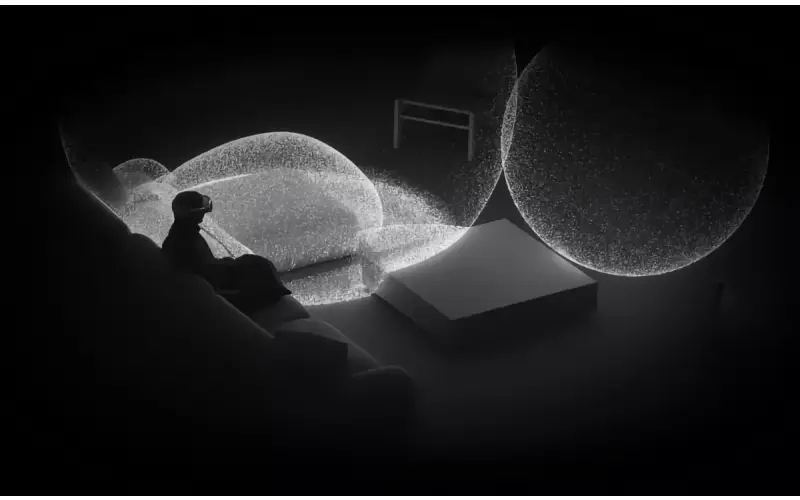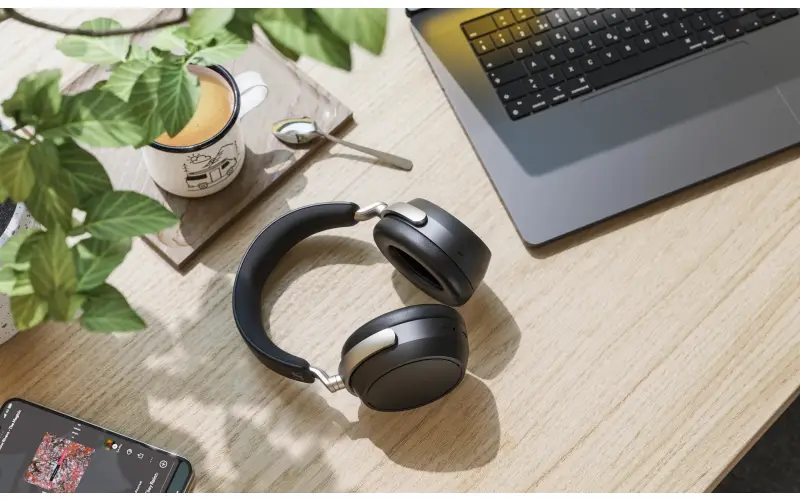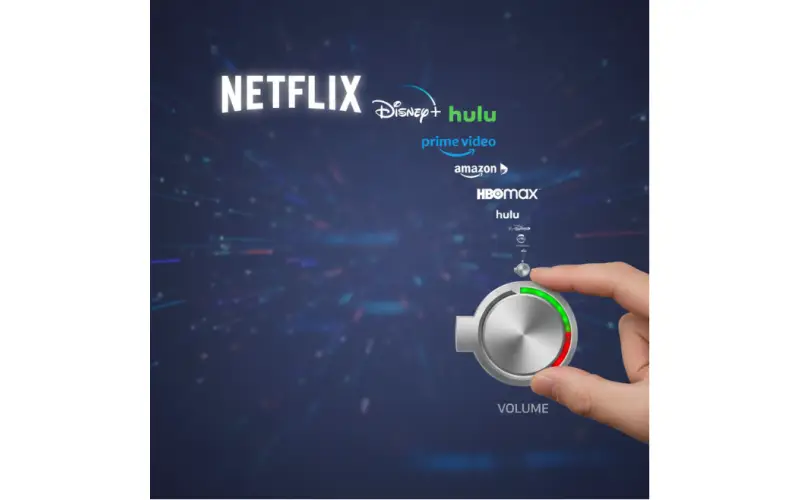By: Dipin Sehdev
At WWDC 2025, Apple quietly introduced a major leap forward in immersive audio: the Apple Spatial Audio Format (ASAF). Not spotlighted in the keynote but instead detailed in a developer session, this new spatial audio format expands on the company’s existing head-tracked Dolby Atmos experience and opens the door to richer, more dynamic audio in Apple’s growing spatial computing ecosystem.
But what exactly is ASAF, and how does it differ from Dolby Atmos or rival formats like Samsung and Google’s Eclipsa Audio? More importantly, what does it mean for creators, engineers, and listeners like you and me—especially those already enjoying Apple’s current spatial audio offering through AirPods Pro 2 (91% CE Critic Score)?
To answer those questions, we need to break down spatial audio itself, examine how ASAF fits into Apple’s strategy, and explore what needs to happen next for this format to move from niche feature to mainstream audio revolution.
What Is Spatial Audio, and How Is It Different from Dolby Atmos?
At its core, spatial audio is a way of delivering sound in a three-dimensional space. Instead of placing audio in a fixed left-right stereo field, spatial audio allows sounds to be positioned above, behind, below, or all around the listener. Imagine hearing a helicopter fly overhead, or a whisper that seems to come from behind your shoulder—this is the promise of spatial audio.
While Dolby Atmos has become the de facto standard for spatial audio in home theater and streaming content, it’s not the only game in town. Atmos works by encoding audio objects that can be positioned dynamically in 3D space, then rendered in real time based on the listener’s speaker configuration or headphone setup.
Apple's spatial audio with head tracking takes that idea further. On AirPods Pro, AirPods Max, and AirPods Pro 2, the system continuously monitors your head movement using gyroscopes and accelerometers, adjusting the soundstage accordingly. If you turn your head left, the audio "anchors" to the screen, making it feel like the sound is coming from a fixed direction.
ASAF, Apple’s new format, builds upon these foundations—offering even more flexibility and realism. But to understand how, we need to look at the technology stack Apple introduced.
Introducing ASAF: Apple Spatial Audio Format
The Apple Spatial Audio Format (ASAF) is Apple’s next-gen audio framework designed for fully immersive, head-tracked, environment-aware audio. Unveiled at WWDC 25 in a session for developers—not consumers—it represents a powerful evolution of Apple’s ambitions in spatial sound.
There are two key components to ASAF:
-
ASAF: This is the production-side format that defines how sound is positioned in 3D space. It enables externalized audio—that is, sound that appears to originate outside your head, anchored in real-world positions.
-
APAC (Apple Positional Audio Codec): A new audio codec designed to deliver spatial audio content efficiently across Apple’s platforms. APAC supports bitrates from 64kbps to 768kbps—the same maximum bitrate Apple uses for Dolby Atmos streams on Apple TV 4K and other platforms.
Together, ASAF and APAC form a pipeline for high-resolution, adaptive spatial audio that integrates deeply into Apple’s ecosystem—especially visionOS and the Vision Pro headset.
How ASAF Differs from Dolby Atmos
While ASAF can contain Dolby Atmos content, it’s not just another container format. According to Blake Gordon, Immersive Video Engineer at Apple, ASAF adds a new layer of spatial fidelity on top of what Atmos provides.
“ASAF enables truly externalized audio experiences by ensuring acoustic cues are used to render the audio... The rendered audio is completely adaptive based on the object position and orientation, as well as listener position and orientation. None of it is baked in.”
In simpler terms, ASAF’s rendering engine is object-based and environment-aware. Unlike Atmos, which assumes you’re sitting still in a virtual theater, ASAF can adapt audio dynamically based on:
-
The user’s head orientation
-
Real-time positioning within a virtual or augmented space
-
Changes in virtual environments (e.g. reverb and reflections inside a cave vs an open room)
-
Ambient or interactive elements within mixed reality applications
That makes it an ideal format for spatial computing—Apple’s term for the convergence of AR/VR, immersive video, and interactive experiences like those found on Vision Pro.
Real-Time Rendering, Not Baked-In Effects
One of the key differentiators is that ASAF's audio isn't pre-rendered with effects like reverb, echo, or distance baked in. Instead, the system uses real-time rendering based on metadata and head position. This allows Apple to scale the experience dynamically across different environments and scenarios.
Want to hear footsteps echo more realistically as you walk through a virtual alley in Vision Pro? ASAF makes that possible. Watching a concert in immersive video? The vocals can feel like they're right in front of you, with the crowd sound surrounding your ears, not your head.
This goes beyond even the best Atmos headphone implementations today—and it's one of the reasons Apple chose to emphasize ASAF for Immersive Video content moving forward.
Why Apple Is Betting Big on ASAF
Make no mistake: ASAF isn’t just a technical upgrade. It’s a strategic push to position Apple at the center of the next era of audio production and consumption.
While Samsung and Google are pushing their own Dolby Atmos alternatives under the Eclipsa Audio brand, Apple is taking a more nuanced route. Instead of ditching Atmos, it's building a format that can contain Atmos but enhance it, while also enabling more dynamic spatial audio creation for VR, AR, and beyond.
And that’s key—because Apple controls both the hardware and software pipeline. From the AirPods Pro 2 to the Apple Vision Pro to the iPhone 16’s spatial audio capture capabilities, ASAF is designed to work across the stack. It’s optimized for:
-
tvOS, iOS, iPadOS, macOS, and visionOS
-
AirPods and Beats headphones with head tracking
-
Capture from iPhone 16 or professional recording tools
-
Authoring in industry-standard tools like DaVinci Resolve Studio
In fact, Apple is requiring that all new Immersive Video titles for Vision Pro use APAC. That doesn’t mean creators can’t use Dolby Atmos—but they’ll need to package it within this new Apple-defined format.
Spatial Audio Capture with iPhone 16
Another major shift comes on the capture side: the iPhone 16 can record ASAF-compatible spatial audio. This democratizes immersive sound creation in the same way Apple democratized filmmaking and photography.
While professional gear is still recommended for high-end results, this move signals Apple’s intent to make spatial audio accessible to indie creators, podcasters, educators, and YouTubers.
If Apple can make ASAF tools easy to use and well-integrated into production software, it could win over a new generation of audio engineers—something Dolby Atmos has struggled with, especially in music.
ASAF vs. Eclipsa Audio: A New Format War?
With Google and Samsung backing Eclipsa Audio as a cross-platform Dolby Atmos competitor, the question becomes: will ASAF ignite another format war?
Possibly—but Apple may not care. Unlike Dolby, whose revenue model depends on licensing, Apple doesn’t need other companies to adopt ASAF. Its goal is likely to drive differentiation and exclusivity in the Apple ecosystem—particularly in Vision Pro.
In that sense, ASAF functions more like ProMotion or FaceTime: proprietary, well-optimized, and deeply integrated into the Apple experience. Whether Eclipsa gains broader adoption on Android devices may not matter—so long as Apple maintains control over the premium immersive experience on its own platforms.
The Missing Piece: Industry Support
Despite ASAF’s technical promise, one big challenge remains: getting the industry on board.
Apple has shown it's willing to open up. It dropped royalties on its Apple Lossless Audio Codec (ALAC) back in 2011, and ASAF is reportedly compatible with industry-standard tools and plug-ins. But support from record labels, movie studios, podcast networks, and independent creators is crucial.
Right now, spatial audio adoption in music is inconsistent. Many tracks labeled “Dolby Atmos” feel flat or artificial—either because of poor mixing or automated upconversion from stereo. The artistry behind true spatial mixes still isn’t widespread.
If Apple wants ASAF to succeed, it needs to:
-
Educate and equip engineers with tools to author great spatial mixes
-
Incentivize labels and studios to remix content in ASAF
-
Ensure playback is seamless across headphones and speakers—not just AirPods
-
Demonstrate value to consumers in meaningful ways (better quality, deeper immersion, exclusive content)
As someone who’s tried spatial audio on AirPods Pro 2, I’ve found the effect genuinely impressive. But it’s inconsistent—some content sounds amazing; others fall flat. The question now is whether ASAF can raise the floor and the ceiling for spatial audio quality.
Will ASAF Work with Non-Apple Headphones?
A fair question—especially for audiophiles and Android users.
Today, Apple’s dynamic spatial audio experiences are tightly linked to its own headphones—particularly the AirPods Pro 2 and AirPods Max. These devices include motion sensors and software integrations necessary for head tracking and real-time rendering.
Without those components, spatial audio can still be delivered—but the results may be less convincing. Some third-party headphones (including Beats models) support fixed spatial audio playback, but lack full tracking capabilities.
Whether Apple will allow open-source playback libraries or enable ASAF support on platforms like Windows or Android remains unclear. But given Apple’s history, it seems likely that the best ASAF experience will remain Apple-exclusive—at least for now.
Final Thoughts: ASAF Is a Bold Step Forward—But the Work Isn't Done
Apple's Apple Spatial Audio Format marks a significant evolution in immersive audio. It’s smarter than Atmos, more adaptable, and deeply integrated into Apple's broader spatial computing vision.
But a great format is only as strong as the ecosystem behind it.
To make ASAF matter—to make it more than just another acronym—Apple must:
-
Empower creators with tools and education
-
Make spatial audio consistent and high-quality across content
-
Open playback support across more headphones
-
Showcase compelling content that can't be experienced any other way
As a listener who enjoys Apple’s spatial audio, I’m excited by ASAF’s potential. It’s more immersive, more interactive, and more technically sophisticated than anything we’ve heard before. But the true test will be what studios, engineers, and indie creators do with it—and whether Apple gives them the tools to make magic.
Until then, if you’ve got a pair of AirPods Pro 2, you’ve already got a taste of the future. The next step is bringing everyone along for the ride.





